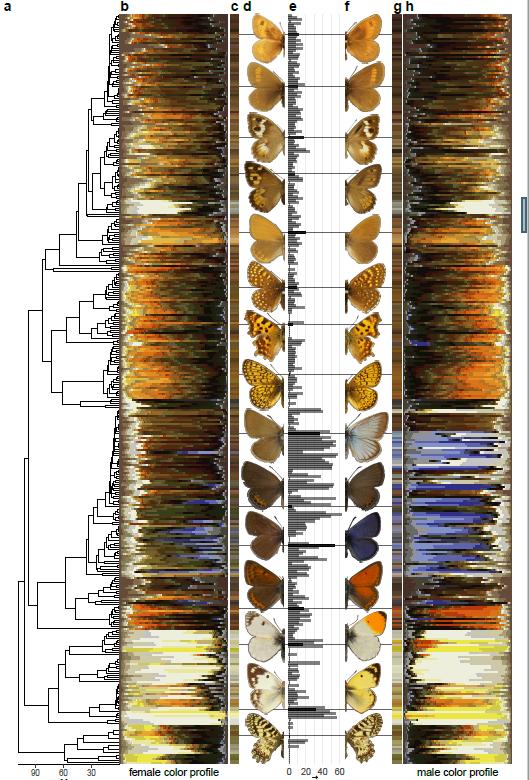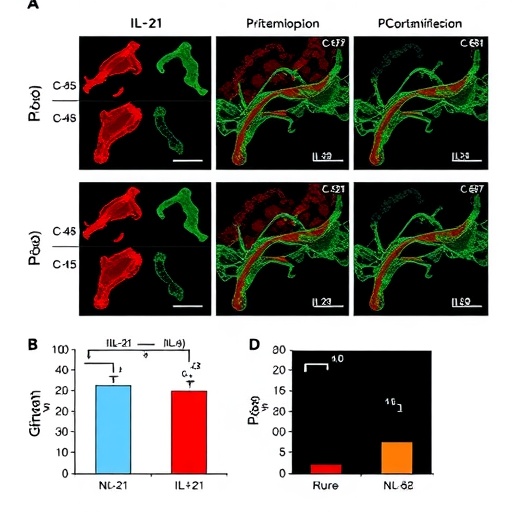
Credit: Kalle Tunström
Butterflies have long captured our attention due to their amazing color diversity. But why are they so colorful? A new publication led by researchers from Sweden and Germany suggests that female influence butterfly color diversity by mating with colorful males.
In many species, especially birds and butterflies, males are typically more colorful than females, a phenomenon known as dichromatism. In many dichromatic species, the more conspicuous sex is more vulnerable to predation. Certainly, the male peacock is a much easier target than the more camouflaged hen. Explaining why one member of a species would place itself in more danger was a challenge to Charles Darwin’s early views on evolution by natural selection, as Darwin envisioned natural selection acting to reduce such risks.
Examples of dichromatism in fact were one of the issues that lead him to develop his theory of sexual selection, where elaborate male traits could evolve through female preference for conspicuous males, even in the face of the increased dangers such males would encounter.
Today, many naturalists and biologists alike generally ascribe the exaggerated coloration of males as being due to sexual selection. However, when we see a species in which males are more colorful than females, sexual selection is not necessarily the only answer. An alternative route to dichromatism might begin with males and females both being very colorful, followed by natural selection acting upon females to make them less conspicuous, perhaps due to the cost of being easier prey. Stated another way, perhaps females become less colorful so they are better camouflaged and therefore preyed upon less. The argument that natural selection could give rise to dichromatism was posited by Darwin’s contemporary, Alfred Russel Wallace. Darwin and Wallace in fact argued for decades about the origins of dichromatism in birds and butterflies.
The reason for this long debate between Darwin and Wallace arises because, without knowing how males and females looked in evolutionary past, either sexual selection or natural selection could give rise to dichromatism. Since they had no way of formally assessing what species used to look like, their argument had few routes for resolution.
This is where researchers from Sweden (Stockholm University and Lund University) and Germany (University of Marburg) have recently made progress, by developing statistical means for inferring the ancestral color states of males and females over evolutionary time.
To do this, they first reconstructed the evolutionary relationships among European butterflies and put this into a time calibrated framework. Then they scanned scientific drawings of all these male and female butterfly species, and used that color information in its evolutionary context to estimate the direction of butterfly color evolution for each sex, and in relation to the amounts of dichromatism per species. “Tracking evolutionary colour vectors through time made it possible to quantify both the male and female contribution to dichromatism”, says Dr. Dirk Zeuss from the University of Marburg, who is coauthor of the new study.
“We find that the rates of color evolution in males are faster than in females”, says Dr. Wouter van der Bijl, the lead author of the study. While this finding itself suggested that males might be the target of sexual selection, further analysis was needed to rule out alternative explanations. For example, male color could be evolving rapidly when species are already dichromatic, but not when males and females start to first diverge from each other in color. By modelling both the changes in dichromatism and the changes in male and female color over evolutionary time, the researchers could calculate that changes in male color are twice as important to the evolution of dichromatism than changes in female color.
This finding suggests that Darwin was right, as it is consistent with female preference and thus sexual selection for colorful males being the driving force in color evolution. Thus, the researchers provided some resolution to the 150-year-old argument between Darwin and Wallace about the origins of dichromatism in butterflies, finding that Darwin’s, but not Wallace’s, model of dichromatism evolution explains the patterns better.
###
More information:
The article “Butterfly dichromatism primarily evolved via Darwin’s, not Wallace’s, model” is published in Evolution Letters:
https:/
Contact:
Dr. Wouter van der Bijl: [email protected]
Dr. Christopher Wheat: [email protected]
Media Contact
[email protected]
[email protected]
Related Journal Article
http://dx.




